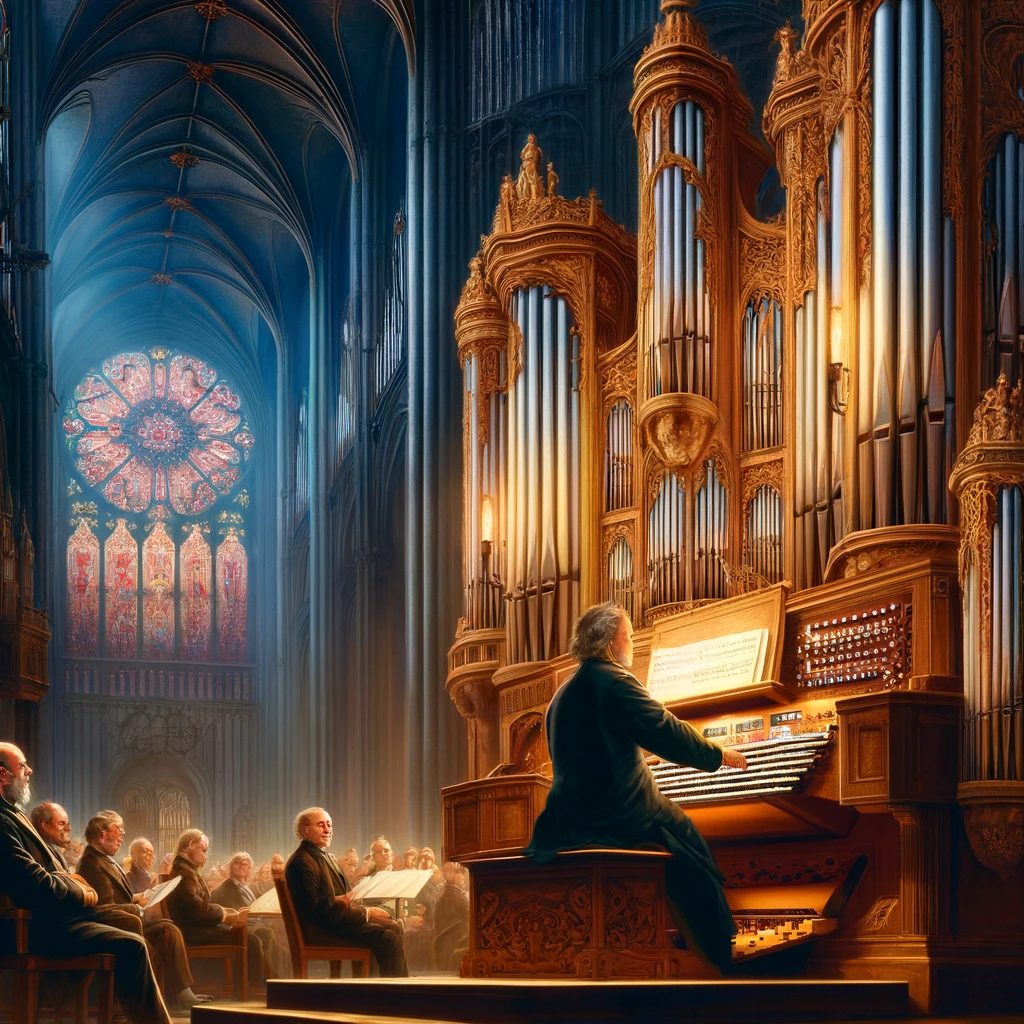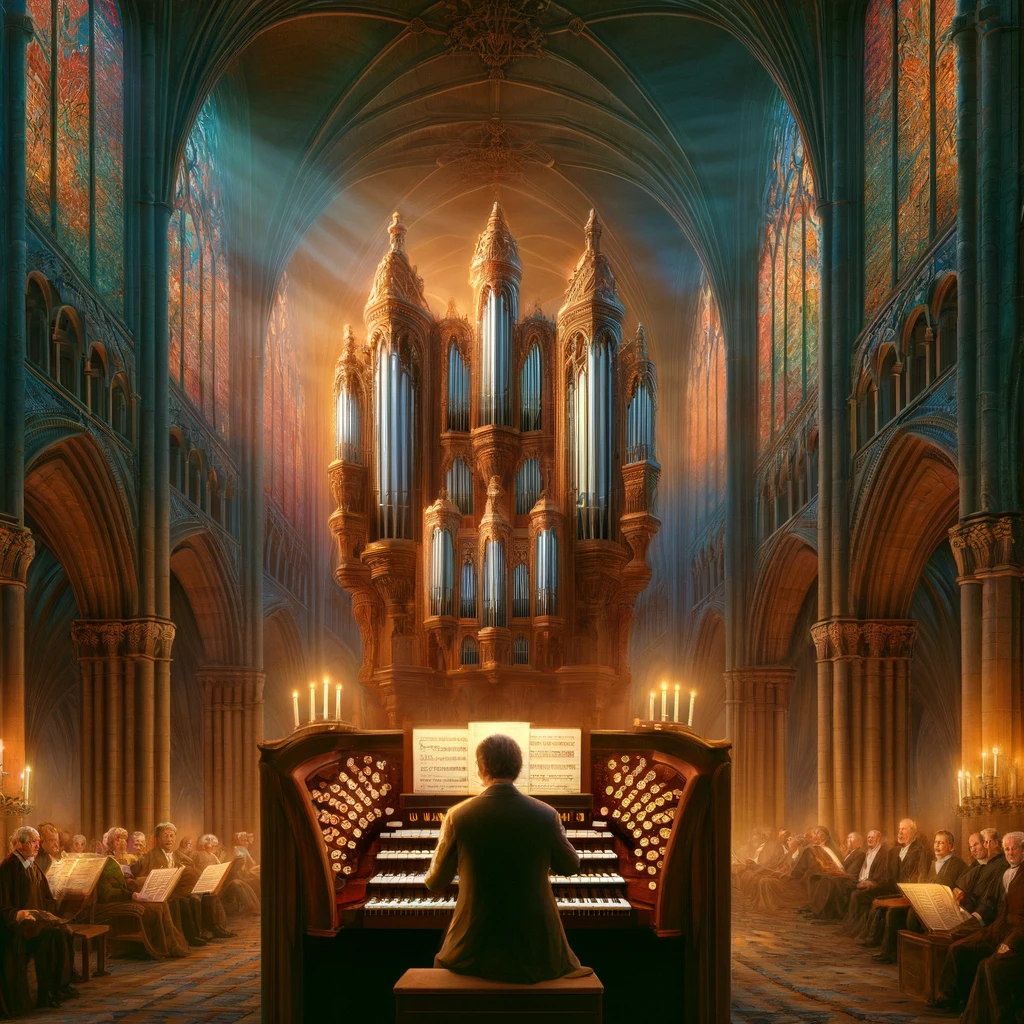
Insights into Beethoven’s Lesser-Known Organ Works
Ludwig van Beethoven, a name synonymous with symphonic grandeur and profound piano sonatas, also ventured into the world of organ music, albeit less famously. Beethoven’s contributions to the organ repertoire may not be as extensive or well-known as his works for other instruments, but they offer a fascinating glimpse into his compositional genius and his exploratory spirit.
The Organ in Beethoven’s Time
During Beethoven’s era, the organ was predominantly associated with church music. However, the late 18th and early 19th centuries saw a gradual evolution in the role of the organ, transitioning from a strictly liturgical instrument to one that found a place in concert halls and private salons. This shift paralleled Beethoven’s own musical journey, which often straddled the sacred and the secular.
Beethoven’s Organ Works: A Closer Look
Beethoven’s foray into organ music is not well documented, and his works for the instrument are relatively few. The most notable among them include pieces that were not originally intended for organ but have since been adapted to exploit the organ’s rich sonorities.
1. Fugue in D Major, WoO 31
This piece, composed in 1793, is one of the few works explicitly written for organ by Beethoven. The fugue showcases his early command of counterpoint—a technique he would later perfect in his more mature works. The intricacy of the fugue structure combined with the powerful voice of the organ makes it a compelling piece, albeit rarely performed.
2. Prelude Through All Major Keys, Op. 39
Originally written for piano, this piece adapts beautifully to the organ. Composed as a series of preludes that modulate through all major keys, the work demonstrates Beethoven’s fascination with harmonic exploration. When played on the organ, the preludes gain a majestic and resonant quality, highlighting the instrument’s capacity for both nuanced expression and grandeur.
3. Adaptations of Other Works
Several of Beethoven’s other compositions, though not specifically written for the organ, have been successfully adapted for the instrument. These include selections from his symphonies and sonatas. For instance, the second movement of the Symphony No. 7, with its solemn, march-like rhythm, translates effectively into an organ piece, its repetitive motifs and dynamic swells mimicking the grand pipe organs of Beethoven’s day.
Performance and Legacy
The performance of Beethoven’s organ works is a niche but important part of understanding his overall impact on classical music. Organists who choose to perform Beethoven often remark on the adaptability of his music to the organ, noting how his compositions for other instruments can be reimagined to utilize the full range of the organ’s capabilities—from the whisper-soft notes to the thunderous crescendos.
While Ludwig van Beethoven may be best remembered for his symphonies and piano sonatas, his contributions to the organ repertoire, though lesser-known, provide a unique perspective on his musical legacy. These works allow us to see a different facet of Beethoven’s genius—an adventurous composer unafraid to explore the potentials of different musical forms and instruments.
Beethoven’s organ music, with its blend of traditional and innovative elements, serves not only as a bridge between musical periods but also as an invitation to explore the deeper, often overlooked corners of his oeuvre. For the modern listener and performer alike, Beethoven’s organ compositions offer a refreshing exploration of the familiar genius through a less trodden path.

Insights into Beethoven’s Compositional Techniques for the Organ
Exploring Beethoven’s approach to organ composition reveals his innovative use of the instrument’s capabilities. Unlike his contemporaries who often wrote organ music with liturgical purposes in mind, Beethoven’s limited but significant contributions to the organ repertoire reflect his broader musical intentions—expressivity above tradition.
4. Chorale Preludes
Though Beethoven did not compose chorale preludes in the traditional sense, his use of chorale-like passages in some of his adaptations points to his appreciation of the organ’s role in church music. His ability to infuse these sacred forms with his own compositional style speaks to his reverence for musical history while pushing its boundaries.
5. Organ as a Symphonic Instrument
Beethoven’s treatment of the organ as a symphonic instrument can be seen in his adaptations of orchestral works. By transcribing these pieces for the organ, he was able to explore the full orchestral texture in a solo performance, showcasing the organ’s versatility. This is evident in adaptations of his more complex works, where the organ’s polyphonic capabilities are used to mimic the interplay of an orchestra.
The Influence of Organ Music on Beethoven’s Later Works
Studying Beethoven’s organ works and their adaptations provides insights into how the organ’s expressive range might have influenced his compositions for other instruments. For example, the broad dynamic range and the capacity for sustained notes in organ music are elements that appear in his piano sonatas and symphonies. This cross-pollination of musical ideas showcases Beethoven’s holistic approach to composition.
6. Integration of Organ Sound into Orchestral and Chamber Music
In his late symphonies, Beethoven’s writing for wind instruments often mirrors the sonorities typical of the organ. This technique creates layers of sound that resemble the organ’s ability to hold chords and create a foundational bass that supports the orchestral structure. The Ninth Symphony’s final movements, where choral elements blend with the orchestra, might have been inspired by the organ’s historical role in supporting choir performances.
Beethoven’s Organ Music in Modern Performances
In modern times, the performances of Beethoven’s organ works are gaining more attention as scholars and musicians look to uncover the full breadth of his musical genius. These performances not only highlight the adaptability of Beethoven’s music but also challenge organists to interpret his works in ways that respect historical practices while appealing to contemporary audiences.
7. Educational and Inspirational Value
Beethoven’s organ music serves as an educational bridge that connects current musicians with historical performance practices. Moreover, these works inspire contemporary composers to consider the organ not just as a historical or liturgical instrument but as a medium capable of modern expression.
Conclusion
While Ludwig van Beethoven’s most famous works will always be his symphonies and piano compositions, his contributions to the organ repertoire embody his experimental spirit and his relentless pursuit of musical exploration. These organ works, though few, are critical in understanding Beethoven as a composer unbounded by convention, eager to explore all possibilities of musical expression.
Through these lesser-known pieces, Beethoven continues to speak to us, urging both performers and listeners to discover the depth and breadth of his musical legacy. As we delve into these works, we not only uncover new layers of his genius but also ensure that even the most obscure parts of his oeuvre are celebrated and appreciated.
Reference Section
- Grove Music Online. “Ludwig van Beethoven.”
- Cooper, Barry. “Beethoven’s Organ Works: A New Perspective.” Music Analysis, 2001.
- Kinderman, William. “Beethoven: Composer, Pianist, Innovator.” 2014.